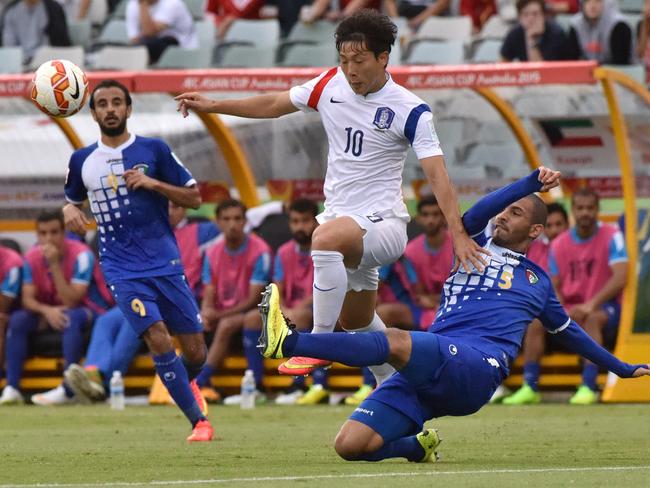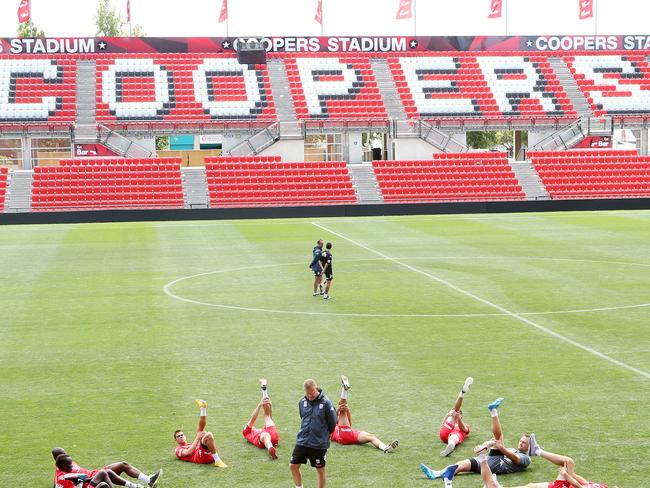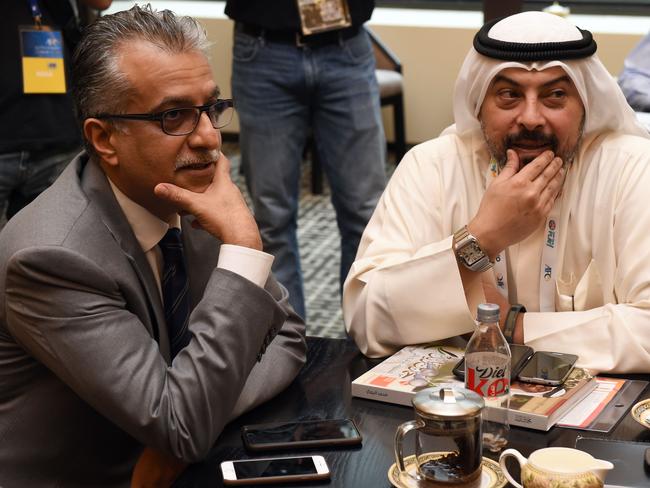Asian Cup 2015: Canberra flourishes as sporting venue as Adelaide falls off radar
CANBERRA has sparked the interest of the world’s most populated region during the Asian Cup while Adelaide seems to have simply fallen off the radar.
CANBERRA is happily punching above its weight at the Asian Cup, gazumping Adelaide in the process.
SOUTH KOREA SKIPPER’S AUSSIE TIES
CAHILL: SOCCEROOS FOCUSED, TOGETHER, HUNGRY
ROOS TO ROTATE FOR SOUTH KOREA
ANGE: ATMOSPHERE WILL TOP SURFACE CONCERNS

The nation’s capital has sparked the interest of Asia, the world’s most populated region which houses more than four billion people.
Canberra, which has 379,600 residents - nearly 900,000 less than Adelaide - is also hosting cricket’s Big Bash final on January 28.
Major Events ACT paid $3.5 million for hosting Asian Cup rights after Canberra Stadium passed a stringent test.
A spokesman for ACT Chief Minister Andrew Barr stated he would respond to questions “on Monday.”
But former chief minister Jon Stanhope, back in 2011, declared: “Canberra can expect a healthy slice of the economic benefits of hosting the Asian Cup.
“An economic analysis by PricewaterhouseCoopers predicts an injection of $10 million into the ACT economy alone.”
Hindmarsh Stadium failed and Adelaide Oval was never considered by the Asian Cup bid team in 2011.
And the Asian Cup investment fee paid by Canberra’s major events arm is not much more than the $3 million the SA government is believed to have handed Lance Armstrong for three appearances at the Tour Down Under.

The city of churches was, back in the 1970s, the third biggest metropolis in Australia behind Sydney and Melbourne.
But it’s fallen off the radar when it comes to hosting big football events.
Adelaide now has a population of 1.29 million and is recognised as one of the best football markets in the country, but it will now see powerful Asian teams and businesses and an estimated 45,000 tourists spend money in Canberra and the eastern states.
The Asian Cup - apart from being a massive sporting event - is a booming business which is destined to attract a TV audience of 800 million people.
South Australia couldn’t even draw any nations for training camps in December after international sides discarded Adelaide as a serious destination.
But Canberra is winning.
About $1 million has been injected into its economy just for hosting Qatar, Oman and Kuwait for training camps before the actual tournament started.
And the wealthiest people from China, Japan, South Korea and the Middle East are all splashing cash on the east coast during the Asian Cup.
It’s football which has brought them here, not vineyards, beaches or the scenery.

Canberra, during the Asian Cup, also hosted the most powerful man in Asian sport - Olympic Council of Asia president Sheikh Ahmad Al-Fahad Al-Sabah.
Sheikh Ahmad was surrounded by a heavy security presence and he was enjoying himself at Canberra Stadium.
Adelaide hasn’t seen a major football event since hosting the low-key Oceania Football Confederation’s Nations Cup at Hindmarsh and Marden Stadium 11 years ago.
Their attempt to secure Asian Cup matches started seven years ago.
Michael Wright, the former recreation and sport minister, wrote to Football Federation Australia in June 2009 expressing interest in Asian Cup matches at Hindmarsh Stadium.
South Australia though didn’t even make it to the final bid table.
The FFA did not consider Adelaide Oval for the Asian Cup as it was not a rectangular stadium before the state government spent $530 million on redeveloping the venue.
Hindmarsh Stadium fell short by 3500 seats, according to Asian Football Confederation’s minimum standard 20,000 capacity.
But Adelaide United could have done with the increased capacity after selling the venue out regularly since the club was born in 2003.
The lack of capacity Hindmarsh seating also means Adelaide misses the chance to host the Socceroos against smaller AFC nations during FIFA World Cup and Asian Cup qualifiers, while Adelaide Oval has been earmarked for the bigger football events.
And cricket’s Big Bash League final is going to a tiny boutique venue - Manuka Oval - which has a capacity of 13,500.
The facts:
Adelaide v Canberra
Canberra Stadium - capacity: 25,000 - hosting seven Asian Cup matches including quarter final on January 23.
Manuka Oval - capacity: 13,550 - Hosting BBL final, January 28
Adelaide
Hindmarsh Stadium - capacity: 16,500
Adelaide Oval - Capacity: 53,500
Canberra population: 379,600
Adelaide population: 1.29 million
